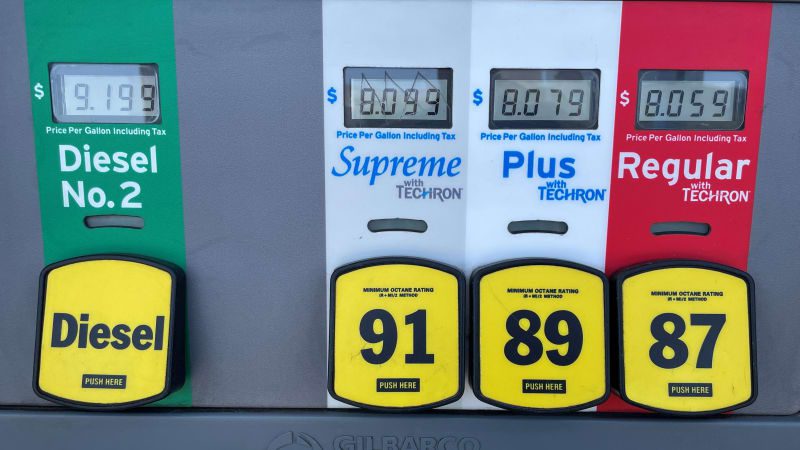Gasoline demand falters with average price on brink of $5/gallon

A Chevron station in Los Angeles. (Reuters)
Gasoline prices at all-time highs may be starting to put a dent on demand at the pump. Yahoo Finance spoke to several strategists to get their take on when consumers start buying less gas amid rising energy costs.
“One could argue that demand destruction for gasoline has already started,” Peter McNally, global sector lead for industrials, materials, and energy at Third Bridge, told Yahoo Finance.
“Since the start of March, U.S. gasoline consumption is 6% lower than the corresponding period in 2019,” pre-pandemic.
Gasoline prices are just pennies away from hitting $5/gallon nationwide. Roughly 15 states already have oil prices at that level, or higher.
The US Energy Information Administration (EIA) has been tracking a slight dip in gasoline demand when compared to 2021.
“According to the EIA, gasoline demand over the last 4 weeks is about 2.0% less than this time last year. As prices continue to rise, I expect that the demand will continue to fall off compared to 2021,” Andy Lipow of Lipow Oil Associates told Yahoo Finance.
The higher prices at the pump corollate with higher costs for crude oil. The problem is exacerbated by limited refineries in the U.S.
West Texas Intermediate (CL=F) crude futures were trading above $122 per barrel on Wednesday. Brent (BZ=F) was trading above $123 per barrel.
“If we broach $125/b on crude oil, and stay there for a while, consumers will change their behavior,” said Stewart Glickman, deputy research director and energy equity analyst at CFRA Research.
High energy prices are also impacting the cost of virtually every good, including food. More money spent on gas and food is leaving the average consumers with less money for more discretionary items.
“When transportation costs go into nosebleed territory, it drives up the cost of bringing goods to market too, which induces companies to pass those cost hikes along to consumers,” he said. “My guess is that destruction would be concurrent – both for necessities (like filling your tank) and for those more discretionary items,” added Glickman.
The big concern is higher energy prices contributing to an economic slowdown as demand destruction kicks in.
“If past practice is any guide, elevated oil prices often induce a recession. So if high prices persist, I see no reason why it would be different this time,” he said.
The difference in 2022 is the impact of the Russia-Ukraine war. Sanctions imposed by the West on Moscow briefly sent Brent crude prices above $130 per barrel back in March.
“If Kiev and Moscow could achieve a ceasefire, then benchmark prices should retreat quickly. That’s the biggest wildcard today,” added Glickman.
One strategist sees a dent in demand if the price of oil stays between the $120-$130 range.
“Indications to us are that demand destruction really begins closer to $120-$130 a barrel,” says Rob Haworth, senior investment strategist at U.S. Bank Wealth Management in Seattle.
“For odds of recession to pull forward into 2022 would take significantly higher oil prices or an impingement on global energy supplies as the economy reopens,” he added.
JPMorgan analysts recently predicted the national average of gasoline could hit $6 per gallon — and go even higher by August.





